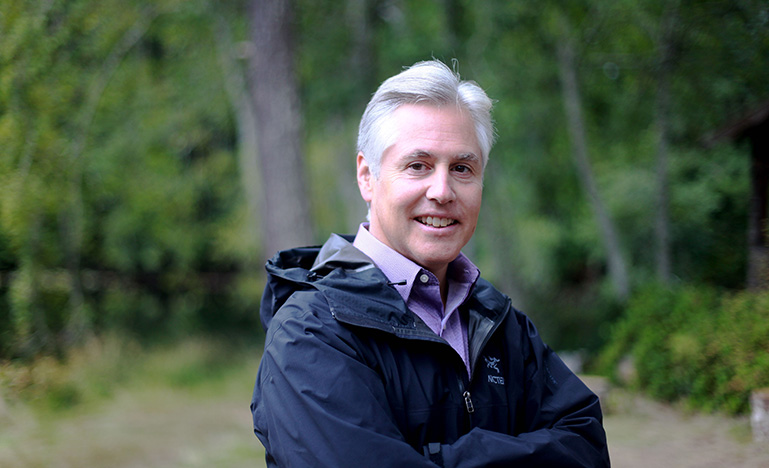Creating a space for Indigenous laws to flourish
The federal government is committing $10 million over five years to advance Indigenous laws in Canada.

The revitalization of Indigenous laws is a critical step on the path to reconciliation. Of the Truth and Reconciliation Commission's 94 Calls to Action one that stands out is "number 50," says Canadian Bar Association President Bradley Regehr. "[It] demands that governments recognize Indigenous peoples had and have legal traditions, and that they provide space for those traditions within the fabric of Canadian jurisprudence."
Specifically, Call to action 50 requires Ottawa, in collaboration with Aboriginal organizations, to fund the establishment of law institutes for the development, use and understanding of Indigenous laws and access to justice in accordance with the unique cultures of Aboriginal peoples in Canada, and in line with the United Nations Declaration on the Rights of Indigenous Peoples.
The 2019 federal budget committed $10 million over five years to fund Indigenous law initiatives across the country. In May 2021, the federal government unveiled 21 projects that will receive those funds. "These 21 projects in Eastern, Western and Northern Canada will build knowledge about traditional and modern Indigenous law," explains Brad Regehr. "Many of the projects are aimed at creating a necessary part of the framework for self-governance."
Some of the project descriptions are vague, but there may good reasons for that. "I think about law as being standards and principles, criteria, guideposts, signposts, authority precedents for taking action," says University of Victoria Professor John Borrows, Canada Research Chair in Indigenous Law and recipient of the 2021 CBA President's Award (pictured above). "What these projects are doing is trying to identify those principles and processes by communities getting engaged with them to be able to accredit them and implement them such that they have application within their communities, and of course have implications for communities outside as well."
Federal Justice Minister David Lametti says the 21 projects were carefully chosen for their likelihood of success. "They all have some areas of interest particular to a people, to a nation and to the revitalization of an Indigenous legal system or legal tradition."
Call to action 50 wants us to "expand and revitalize, provide greater representation of Indigenous legal practices," Lametti adds, noting that all selected projects do that, whether by revitalizing or re-teaching traditional code or by working with Elders and gaining a better understanding of the knowledge that exists. "All of these things will help people govern themselves. That's a fundamental part of the reconciliation process," he says.
But it needs to be led by Indigenous people themselves, the Justice Minister insists. "That's critically important. Indigenous people themselves are driving these projects. It's not Lametti sitting in Ottawa," he says.
Regehr says funding for the 21 projects "shows the government's commitment to furthering the Truth and Reconciliation Commission's work, but more money will be necessary if Call to Action 50 is to be fully realized."
There were a lot of good projects that did not get funded this time, says Lametti acknowledging that his government "struggled" with some decisions. "We hope that there will be subsequent rounds of funding so they will be funded."
Strengthening capacity
One of the 21 projects aims to strengthen Inuit capacity and justice governance in Nunavik by documenting, mobilizing and promoting Inuit legal practices and knowledge. That project is led by Inuit organizations and Université Laval anthropologist Caroline Hervé, who has done extensive work with Inuit partners across Canada and Alaska over the last decade.
We already know Inuit justice systems existed before colonization, she explains. “But what we don’t know is how those practices and knowledge have been transformed. What do they look like today?"
Colonization was like a steamroller, Lametti says, which is why we need to work to bring back Indigenous legal practices. Particularly in a context "where you had residential schools, you had all the things that devastated Indigenous peoples across Canada, the revitalization of normative systems working on the ground in a way that is coherent with how people believe, think and act is critically important to reconciliation."
Caroline Hervé says half of the Nunavik project seeks to accomplish that. "The other half is to take a look at it from the other end and ask ourselves what the Inuit can teach us about social order, for instance. It's to work with them, in their own language – Inuktitut – to understand their perspectives on social order, on justice, that could bring new ideas and might help us transform our own practices."
David Lametti says he supports this approach. "For too long in the colonial system, the common law and civil law, we've ignored the wisdom that's there on the ground. We shouldn't," he says.
"We can take on that Indigenous wisdom and really get to a better place for everybody, not just Indigenous Canadians but non-Indigenous Canadians as well. And if we're open-minded, we can learn. We can all learn from each other. And wouldn't that be the promise of reconciliation?"
For this mutually beneficial learning relationship to happen, we need coordination between Indigenous laws and other laws, says Borrows. "It can't be one-sided because you slip into unilateralism and you slip into deference and marginalization — one side just has all the resources and the ability to articulate what their hopes and rules and aspirations might be, and the other side doesn't have that same opportunity."


